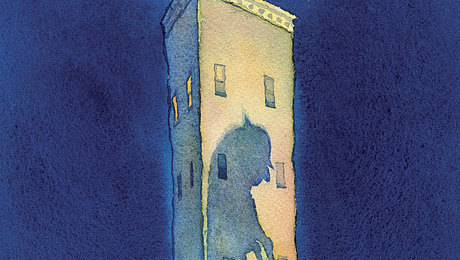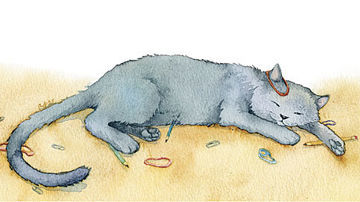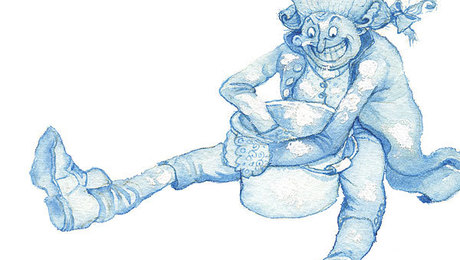Raising the Roof in China
Great moments in building history: A community event
I arrived in Lantian at dusk, the last of the passengers to get off the aging bus, and set off on foot toward the village. I had come to the village to join in a roof raising, the central symbolic and physical activity of building a house in northern China. The next day I had the privilege of participating in a building activity that was as much a matter of firecrackers as hammer and nails.
Tian Xiaolong had lived in his father’s house until he married. Now in his mid-30s and with a wife and two children, Tian was ready to build his own house.
The rectangular plan of the new Tian house enclosed a space 9m deep by 12m wide, symmetrical about both axes. The walls were of locally fired brick (33,000 of them) in two wythes with a Flemish bond (alternating stretchers and headers), corbeled at each rake. Two reinforcing pilasters at the bearing points of the future roof trusses divided the wall into thirds. In each long wall, a wood frame outlined a centered door flanked by two windows, each centered on a side bay.
After the fall harvest, Tian had engaged two builders, brothers with the surname Wang from a neighboring village, to supervise construction of the house. By arrangement, Tian provided materials, laborers, meals, tea and cigarettes.
Perhaps the most complex of the Wangs’ jobs was the prefabrication of the roof frame. Assembled on the ground of peeled pine poles, the two main trusses and 39 purlins would be raised by a large but unskilled group of men. Each truss is a triangle with a vertical king post and triangulated bracing. The Chinese call these trusses renziliang (or renzijia), meaning ren-shaped truss because the character ren (person) looks something like an inverted V. At the corners, the joints are bolted, but the other joints are mortised or clipped with iron dogs. Four vertical iron rods in tension hold the top chords to the bottom. The trusses would support a frame of purlins and rafters topped with a mat of woven reeds and a covering of clay tile embedded in mud.
Raising the massive trusses is a community event, first of necessity, but also by choice. The raising was to be at noon; the whole village knew this, yet form required that Tian light strings of firecrackers to announce his intentions and to request help. Soon after, Tian’s house was crowded with about 30 men of the village, one foreigner and a boy who had managed to escape school.
As strings of firecrackers popped in the background, everyone shouldered the first truss and, under the direction of the senior Wang, inverted it and guided one end into its pocket on the south wall. I was somehow delighted to hear the men coordinate their efforts with the words “On three. One. Two. Three.” This small congruity with my own culture, where every child seems to learn that collective effort proceeds on the count of three, reminded me of the parallels in cultures so superficially dissimilar.
Stationed on the ground and atop the wall, the men used ropes to hoist first one end of the truss and then the other into recesses in the brick walls. With both trusses hanging upside down, the men rotated the first one upright, pushing with poles and pulling with ropes. That truss was stabilized with a ridge pole extending from the gable end, and then the crew rotated the other. With both trusses upright, the Wangs scaled the frames to lock them in place with the lower piece of a two-part ridge beam. After that, it was a matter of spiking the remaining purlins to the trusses. At last, all that remained was to place the upper ridge beam, but this task was more complex.
Attendant with a frame raising in northern China is a ceremony, part of a set of house rituals that begins with the choosing of the site and continues through the lives of a house and its occupants. While most of the men had been raising the frame, an older man skilled in calligraphy was preparing traditional red banners with a variety of auspicious sayings. Red generally symbolizes joy and good luck. These red banners have a place at the doorways of new houses, where they invite good fortune.
In preparation for raising the final ridge beam, the elder Mr. Tian had brought a table to the center of the house and set on it some of the builders’ tools, an incense burner and two candles in glass bottles. Then the men laid the beam across the table and draped two red banners over the ends. They tied ropes to the ends and passed the ropes over the ridge and down to where several men grabbed each end.
The elder Mr. Tian lit the candles and incense in tribute to the mythical forefather of architects and builders. The ceremony also recognized the efforts of the two buiders who worked on this house as symbolized by the red banners. The next rite closed the frame raising the way it began, with firecrackers. Tian tied two strings of them to the beam, and he lit the ends. Din and smoke filled the room as the men hoisted the beam up toward the ridge.
With the setting of the ridge beam, we all retired to Tian’s father’s house, where the women had prepared a simple but elegant feast. As we ate at small tables around the Tian courtyard, we talked of house building in China and in the United States, of how this day reminded me of the spirit of barn raisings in my country and of how house building is a metaphor for the dreams that people in every culture share. In the end, I had come halfway around the world to find that people are basically the same.
—J. Azevedo spent the 1987-88 school year teaching English writing in Xi’an, People’s Republic of China. Photos by the author.
Fine Homebuilding Recommended Products
Fine Homebuilding receives a commission for items purchased through links on this site, including Amazon Associates and other affiliate advertising programs.

8067 All-Weather Flashing Tape

Handy Heat Gun

Reliable Crimp Connectors


























